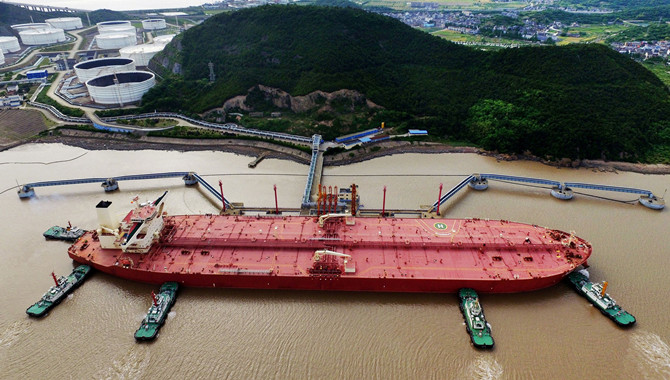China is expected to import a record amount of crude oil in 2023 due to increased demand for fuel as people travel more following the dismantling of COVID-19 controls and as a result of new refineries coming onstream, analysts said.
The prospect of strong demand from the world’s biggest importer will be another bullish factor for an oil market already supported by the OPEC+ producer group’s output cuts and western sanctions on Russian exports.
China’s crude imports may rise between 500,000 and 1 million barrels per day (bpd) this year to as high as 11.8 million bpd, reversing previous two years’ decline to exceed 2020’s record of 10.8 million bpd, according to analysts from four industry consultancies – Wood Mackenzie, FGE, Energy Aspects and S&P Global Commodity Insight.
Since the removal of COVID controls in December, China’s demand for gasoline and jet fuel has risen.
Sun Jianan, an analyst at Energy Aspects, reckoned gasoline and jet fuel would account for around 50% and 30% of total growth in demand for liquid fuels, respectively. Jet fuel consumption, according to Sun, would reach 90% of pre-COVID levels by end-2023.
Demand for diesel – a key industrial and transportation fuel – and petrochemical feedstock naphtha, may grow more slowly as it will take longer for the recovery in China’s manufacturing and property sectors to materialize, said FGE analyst Mia Geng and Energy Aspects’ Sun.
“Economic stimulus, along with infrastructure expansion in 2023 will set the stage for robust diesel consumption recovery,” Wang Zhuwei, an analyst at S&P Global Commodity Insight, said.
With domestic consumption rising and lucrative export markets to supply, the four consultancies saw Chinese refineries raising crude throughput by between 850,000 to 1.2 million bpd over 2022 levels, for an increase of between 6% to 9%.
Chinese consultancy Longzhong said state-run refineries were lifting throughput during the first week of February by 5.5% from January to an average of 74.5% of capacity.
“We’ve been trying to maximize our operations in January and February, as margins have improved on lower crude cost and sharply rebounding gasoline sales,” a Beijing-based state-oil official said.
NEW PLANTS
Two new refineries – PetroChina’s Guangdong Petrochemical and Jiangsu Shenghong Petrochemical with a combined capacity of 520,000 bpd – are expected to enter commercial operation in coming months, industry sources said.
A third greenfield refinery, the 400,000 bpd plant being built by Shandong Yulong Petrochemical, may also begin crude imports for possible test runs at end-2023, a company source told Reuters.
For all the bullish factors, analysts did cite some reasons to be cautious of demand forecasts.
“While increased household saving (during the pandemic) is leading to release of pent-up demand, people may remain wary about the economy, especially in the short term,” said Woodmac analyst Lin Yitian.
“There are also external headwinds, as a weak global economic outlook would put pressure on China’s export sector.”
Other risks included the possibility of a resurgence in COVID infections, and uncertainty over China’s fuel export policy, analysts said.
Source: Reuters
The opinions expressed herein are the author's and not necessarily those of The Xinde Marine News.
Please Contact Us at:
media@xindemarine.com


 Ningbo Containerized Freight Index Weekly Commentar
Ningbo Containerized Freight Index Weekly Commentar  Ningbo Containerized Freight Index Weekly Commentar
Ningbo Containerized Freight Index Weekly Commentar  Ningbo Containerized Freight Index Weekly Commentar
Ningbo Containerized Freight Index Weekly Commentar  BIMCO Shipping Number of the Week: Bulker newbuildi
BIMCO Shipping Number of the Week: Bulker newbuildi  Ningbo Containerized Freight Index Weekly Commentar
Ningbo Containerized Freight Index Weekly Commentar  Ningbo Containerized Freight Index Weekly Commentar
Ningbo Containerized Freight Index Weekly Commentar